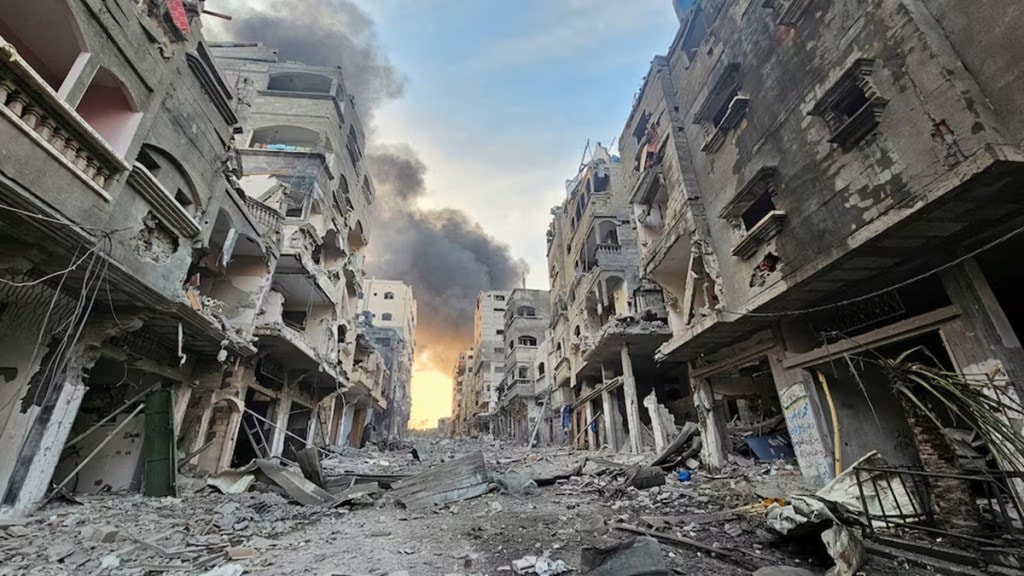In his inaugural address after being sworn in as the 47th president of the US, Donald Trump cast himself as a peacemaker and unifier stating that “one day before I assumed office, the hostages in the Middle East are coming back home to their families”. This reference was to the ceasefire between the Israeli army and Hamas forces — mediated by Qatar, Egypt, and US negotiators — that kicked off in Gaza last Sunday with three Israeli female captives released by Hamas in exchange for 90 Palestinian women and minors from Israeli prisons. The Gaza war was triggered by the incursion of Hamas forces into Israel, killing 1,200 people and taking 250 hostages on October 7, 2023. This is the first pause in more than a year from the relentless Israeli bombardment and ground assault that has reduced Gaza to rubble and a dystopian wasteland. This is also the first since November 2023 when a week-long cessation of hostilities facilitated the swap of 105 Israeli captives, including foreign nationals, for 240 Palestinians.
The ceasefire, however fragile it appears, clearly bears the imprimatur of Trump after he deputed his envoy to West Asia, Steve Witkoff, to persuade Israel’s Prime Minister Benjamin Netanyahu to accept the deal while the Qataris worked on Hamas to do the same. Nothing exemplifies its tenuous nature more than the continued pounding by Israeli warplanes even after the ceasefire deal was announced by the Prime Minister of Qatar on January 15. What makes it somewhat challenging is the sequencing. The initial phase extends for six weeks in which 33 Israeli captives will be released for 1,900 Palestinians. Six hundred truckloads of humanitarian aids are to be allowed into Gaza every day. On the 16th day of the ceasefire, talks are to begin for the second phase in which the remaining 65 male hostages will be freed in return for Israel’s withdrawal from Gaza and a permanent ceasefire.
There is also a potential third phase in which the bodies of dead Israeli hostages and Hamas militants would be exchanged and the imperative of Gaza’s reconstruction will be addressed under international supervision. This three-phase proposal indeed is similar to what the former President Joseph Biden proposed last May but Netanyahu ran circles around US mediators by introducing fresh conditions whenever a deal seemed imminent. This was of course blamed on Hamas’ intransigence. The sight of Hamas fighters emerging in full strength on Gaza streets after the ceasefire kicked in last Sunday will only embolden Netanyahu to resume fighting after the initial phase is over, if not earlier, till the Palestinian resistance group is “totally destroyed”. Netanyahu of course has the tacit support of the US “in doing what it has to do” if Hamas reneges on the Gaza ceasefire-for-hostages deal. “Hamas will never govern Gaza. That is completely unacceptable,” stated Trump’s national security advisor, Mike Waltz.
The prospects of a permanent ceasefire thus appear elusive as there is also no clarity whatsoever on who will administer and rebuild Gaza. While Netanyahu obliged Trump to claim bragging rights as a peacemaker and unifier — perhaps in exchange for fewer restraints to deal with the Palestinian question — those who will suffer the most will be the hapless Palestinians, of whom 47,000 have so far been killed and 110,000 injured, as full-blown humanitarian crisis conditions afflict the Gazan citizenry.
